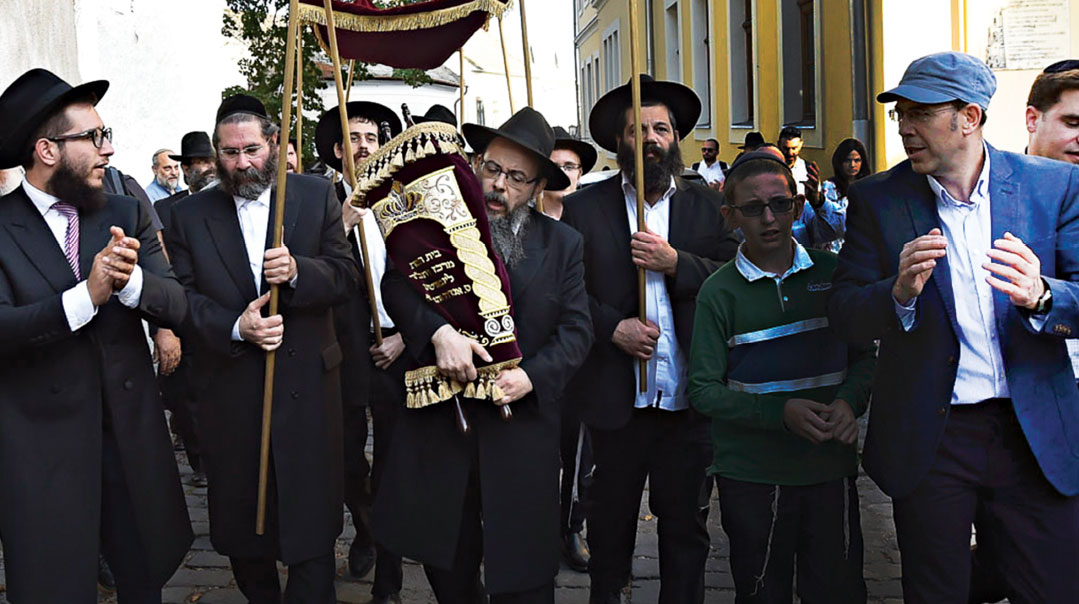When Havana Was a Haven
| September 13, 2017When World War II broke out, many European Jews who hoped to flee to the United States found themselves detouring through Cuba

Photos: Family archives
“Esta es la tierra más hermosa que ojos humanos han visto —This is the most beautiful land that human eyes have ever seen” — is one of Christopher Columbus’s most remembered utterances. Columbus was searching for a shortcut to India, a land famous for its fabulous silks and spices, and not for a tropical paradise. As happened elsewhere with the lands in the New World that Columbus claimed for the Spanish crown, Cuba wasn’t just a profitable discovery for the Spaniards, it was also one of the places to which Anusim escaping from the Spanish Inquisition fled.
History repeated itself almost 450 years later when Jews escaping from Nazi-occupied Europe sought a temporary haven in Cuba while they waited to receive US visas. For some of them, the long voyage across the Atlantic Ocean ended in tragedy. Most of the 937 passengers on board the St. Louis, which set sail from Hamburg, Germany, in May 1939, for instance, were refused entry when their ship reached Havana; only those who already possessed valid US visas were allowed to disembark. When the US refused to relax its immigration regulations and admit the remaining 907 passengers, the ship was forced to return to Europe.
But soon afterward Cuba once again opened its doors. Among those who found a safe haven on the island were 250 Jewish families from Belgium.
On the Run
When Germany invaded the Low Countries — Belgium, Holland, and Luxembourg — on Friday, May 10, 1940, Dr. Aaron Nussbaum was a nine-year-old Jewish child living in Antwerp. Nearly eight decades later, the retired Toronto principal and popular lecturer recalls, “Our family immediately left Antwerp for Brussels, and my grandparents joined us after Shabbat. We booked tickets on a train to Paris, but because of the war we were diverted to a suburb of Toulouse, in Southern France.”
Less than six weeks later, France also fell to the German army. Aaron’s father began to work on finding a way out of Europe, and eventually procured affidavits from relatives in the US, followed by a visa. In 1941, Aaron, his parents, and sister traveled to the port of Marseille to begin their voyage to the States. “My grandparents remained near Toulouse, thinking that no one would bother elderly people,” he says.
After Japan attacked Pearl Harbor on December 7, 1941, the United States declared war on the Axis Powers and all visas were revoked. Overnight, the Nussbaums and hundreds of other Belgian Jews were trapped in hostile France.
Dr. Nussbaum’s family obtained a laissez-passer to Cuba, with China as their official final destination. Aaron’s father had brought some money from Antwerp, as well as some diamonds sewn into clothing. But his son stresses that Jews who couldn’t pay for the fare were helped by the American Joint Distribution Committee, which also commissioned ships to transport Jews escaping from Europe.
Mr. Jacob Censor, today of Kew Gardens Hills, is another native of Antwerp. “We didn’t flee our homes in Antwerp because of the specter of concentration camps and mass shootings — we didn’t believe that could ever happen to us,” he explains. “Rather, we left because of the German bombardment; we wanted to get out of the path of war.”
The three Censor families left their homes in Antwerp in 1940, and made their way to rural France. When the German armies advanced into France, the family decided to escape further. Few doors were open to the increasingly desperate Jewish refugees. Some obtained visas to British-controlled Jamaica, or to Siam (present-day Thailand) or China. The Censors originally set their sights on Brazil and obtained Haitian transit visas to facilitate this, but this plan was foiled by some informants and fell through. Next, they were beneficiaries of the altruism of righteous gentile Aristides de Sousa Mendes. Sousa Mendes, a Portuguese consul stationed in Bordeaux, went against the orders of the Portuguese Salazar regime and issued thousands of Portuguese visas to French and Belgian refugees.
The Censor family traveled through Spain and spent a year in Portugal. Portugal wasn’t hostile toward Jewish refugees, but they were afraid the Germans would arrive there, too. “We wanted to reach America, and knew that several people had successfully applied for US visas from Cuba,” says Mr. Censor. “We traveled by ship to Havana. When our boat docked, my father disembarked to apply for visas at the US consulate, while we remained on the boat. This had worked for many before us, but just then the US declared war on Japan. The visas were refused and we ended up in Cuba. We were among the first boatload of Belgian Jewish refugees to be stranded in Havana.”
Oops! We could not locate your form.












